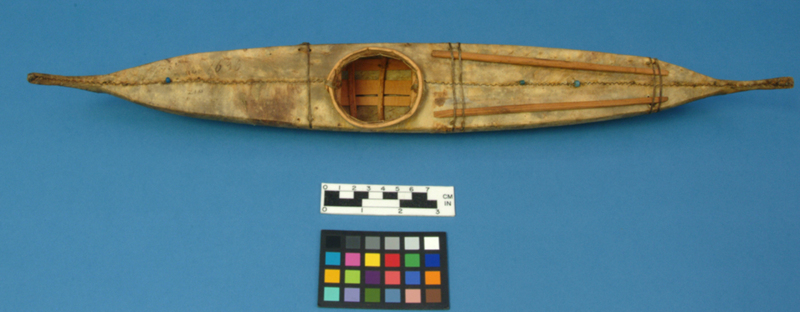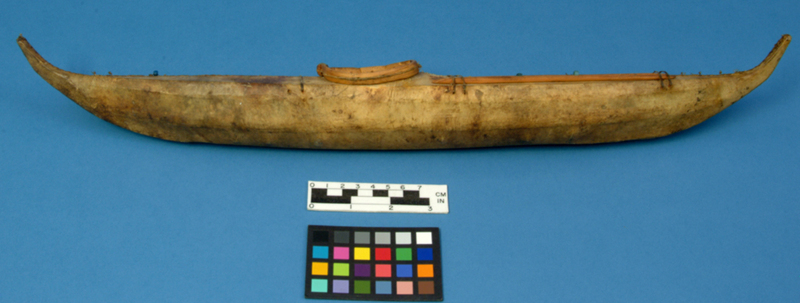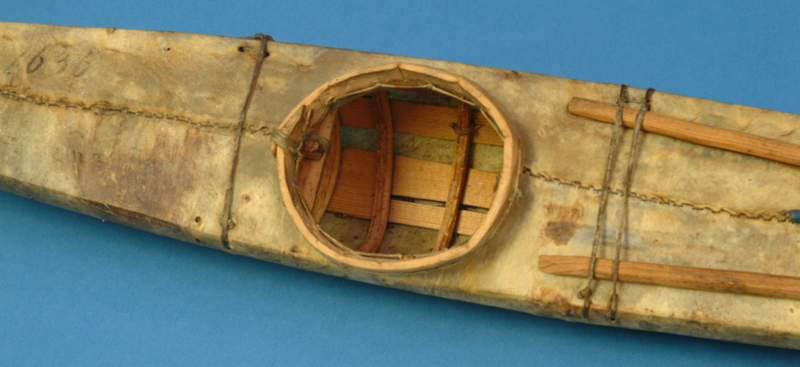Kayak Model Item Number: E1636-0 from the National Museum of Natural History






Notes
No catalog card found in card fileSource of the information below: Inuvialuit Pitqusiit Inuuniarutait: Inuvialuit Living History, The MacFarlane Collection website, by the Inuvialuit Cultural Resource Centre (ICRC), Inuvik, N.W.T., Canada (website credits here http://www.inuvialuitlivinghistory.ca/posts/12 ), entry on this artifact http://www.inuvialuitlivinghistory.ca/items/73 , retrieved 12-17-2019: Model of a kayak with prominent upturned ends that are distinctive of Inuvialuit kayaks. The frame is made from wood, and the cover is made from several pieces of hide stretched over the frame and stitched together. Three blue glass beads are attached to a seam that runs lengthwise along the deck. Deck lashings made from sinew for holding hunting implements are attached fore and aft of the cockpit. Two wooden implements are held by the foredeck lashings. These may represent sticks that were used to retrieve items stored inside the kayak. More information here: http://www.inuvialuitlivinghistory.ca/item_types/32: Inuvialuit used lightweight kayaks for hunting whales and seals, setting and hauling fishnets, and spearing swimming caribou. The frames were made from driftwood, and skins of seals or beluga whales were used for covers. Inuvialuit kayaks had distinctive upturned stems that were useful for lifting them from the water. Full-sized kayaks would have been difficult to send to the Smithsonian Institution, and MacFarlane instead collected accurately made models.See Collins boat MS. p. 821.
Item History
- Made in Northwest Territories, Canada
- Collected in Northwest Territories, Canada
- Received from Roderick R. MacFarlane on December 21, 1866
What
- Name
- Kayak Model
- Identification Number
- E1636-0
- Type of Item
- kayak model
Who
- Culture
- Eskimo, Inuit and Inuvialuk
- Received from
- Roderick R. MacFarlane
Where
- Holding Institution
- National Museum of Natural History
- Made in
- Northwest Territories, Canada
- Collected in
- Northwest Territories, Canada
When
- Acquisition Date
- on December 21, 1866
Other
- Accession Number
- 66A00090